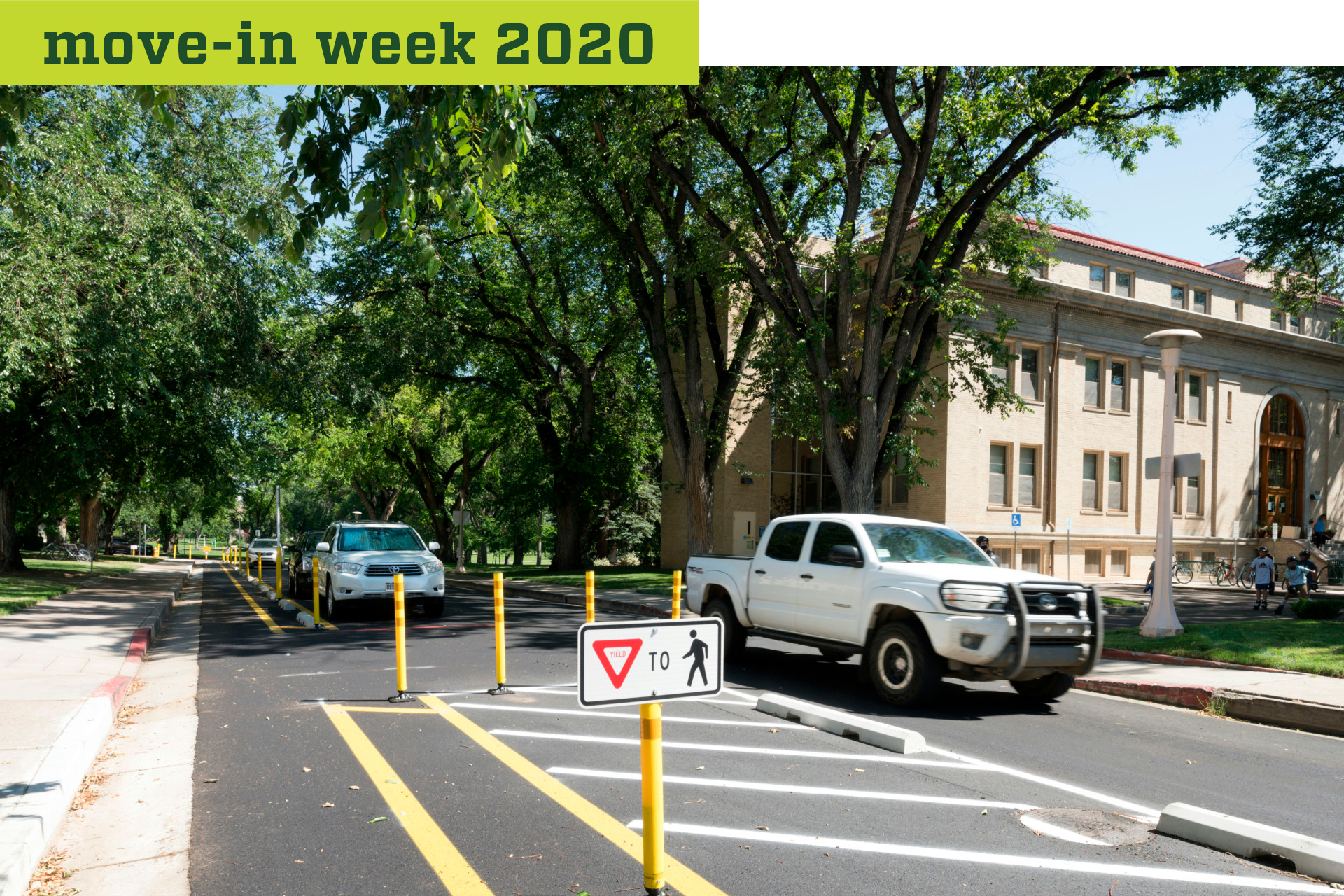
Amy Van Dyken Way has a new look and traffic pattern.
Colorado State University students begin moving into campus housing this week, and although in past years the process has included temporarily blocked streets and detours around residence halls, this week will look dramatically different. Not only will there be fewer residents moving in at the same time since the schedule has been expanded to five days instead of two, but there will be no closed streets, no detours, and plenty of accessible parking for unloading and saying goodbye.
Move-In parking and traffic
Parking areas with easy access to residence halls, including the large parking area west of Moby Arena, south side of Hughes Way and along Plum Street will be open for 30-minute unloading. Parking and Transportation Services will not be enforcing restrictions in the residence hall parking areas and parking west of Meridian Avenue to support move-in activities. Areas further away from residence halls on the east side of campus, including the Lory Student Center and Morgan Library parking areas, will require a valid CSU permit or hourly parking payment. Meridian Avenue between Hughes Way and West Plum Street will remain closed to traffic, at it usually is. Visit here and check the Move-In Week box to find a complete map for parking information.
Noticeable changes on main campus
A quiet campus for the past several months has allowed construction projects to be completed, many ahead of schedule.
Tim Kemp, assistant director for engineering and capital construction in Facilities Management, said crews have taken advantage of a less-crowded campus to complete projects and reduced construction stress for students, employees and visitors.
“Our Facilities Management teams and our construction partners have done extraordinary work the past several months to create an even more beautiful and functional main campus,” he said. “We have added bicycle- and pedestrian-friendly access, our grounds crews have added incredible landscaping, and we have completed projects that will benefit all members of our CSU community.”
Hughes Way
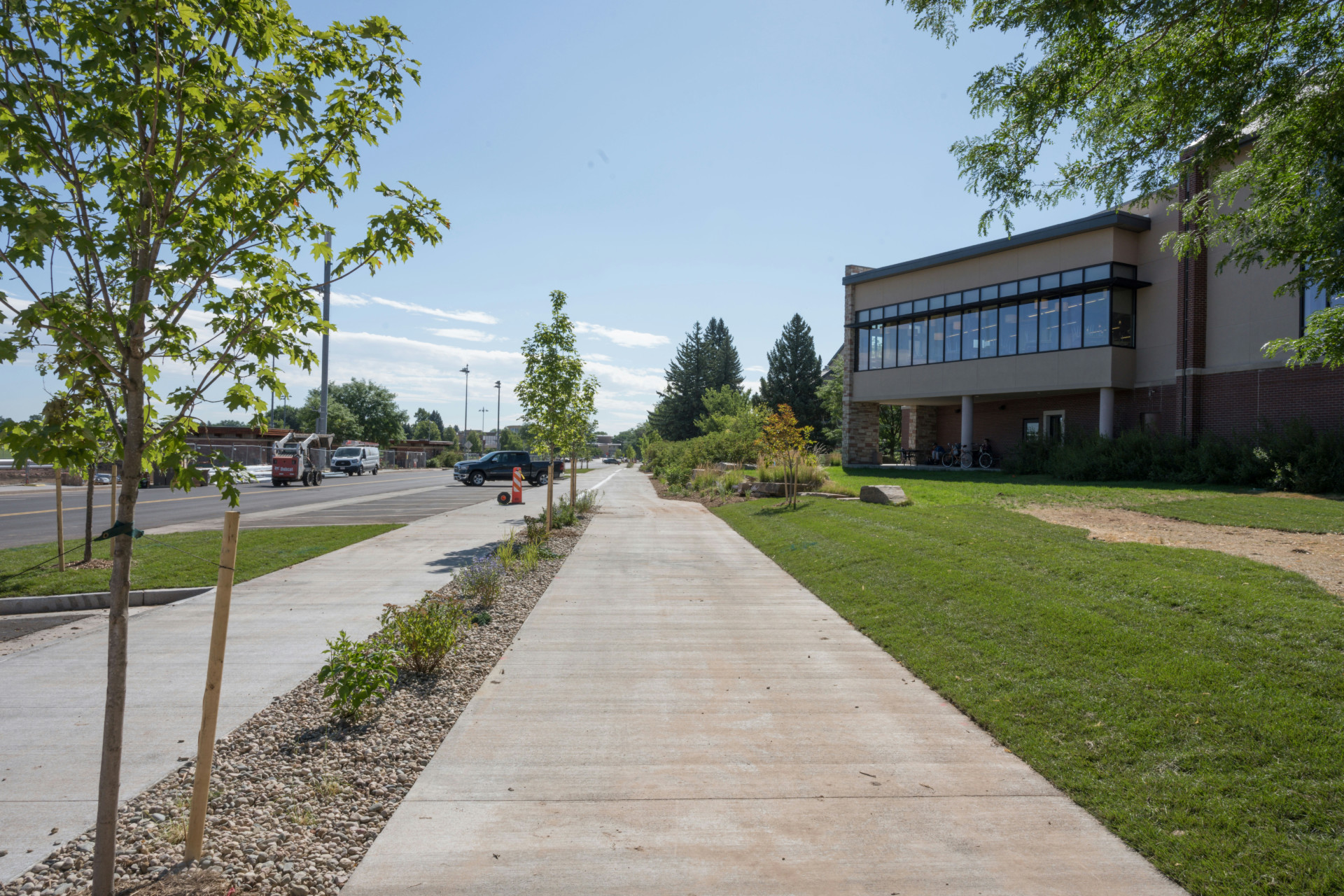
Hughes Way has been reconfigured into a two-way street for traffic arriving and leaving campus from Shields Street. In addition to introducing two-way traffic, separate pedestrian and two-way bike trail infrastructure have been constructed along the busy thoroughfare.
University Avenue and Amy Van Dyken Way
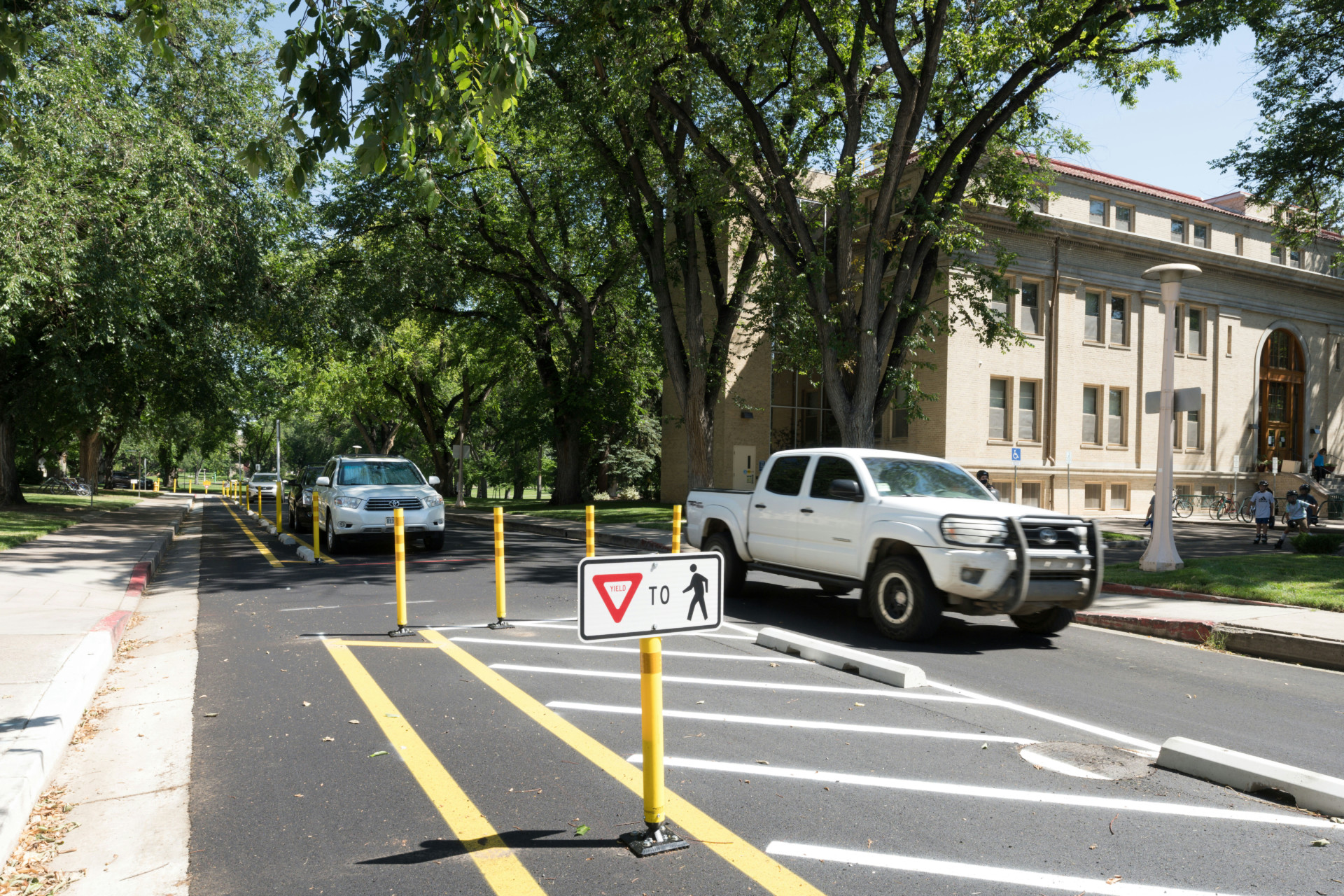
University Avenue between College Avenue and Amy Van Dyken Way also has a new look and traffic pattern. Motor vehicles are allowed traveling eastbound only and bike and pedestrian access has been expanded. Amy Van Dyken Way continues to be one-way, north to south, and a protected bike lane has been created.
Lagoon

The lagoon project has been completed and provides a spectacular area for relaxation and a lovely view of the Rocky Mountains across the CSU Great Green. The lagoon is smaller than the original and has a more naturalistic appearance with a gravel trail, native grasses and border seating along the edge and a new pump system that better circulates and cleans the water. Modifications to the grades of the pond basin will also provide additional stormwater and floodwater capacity if a major flooding event were to ever occur on campus.
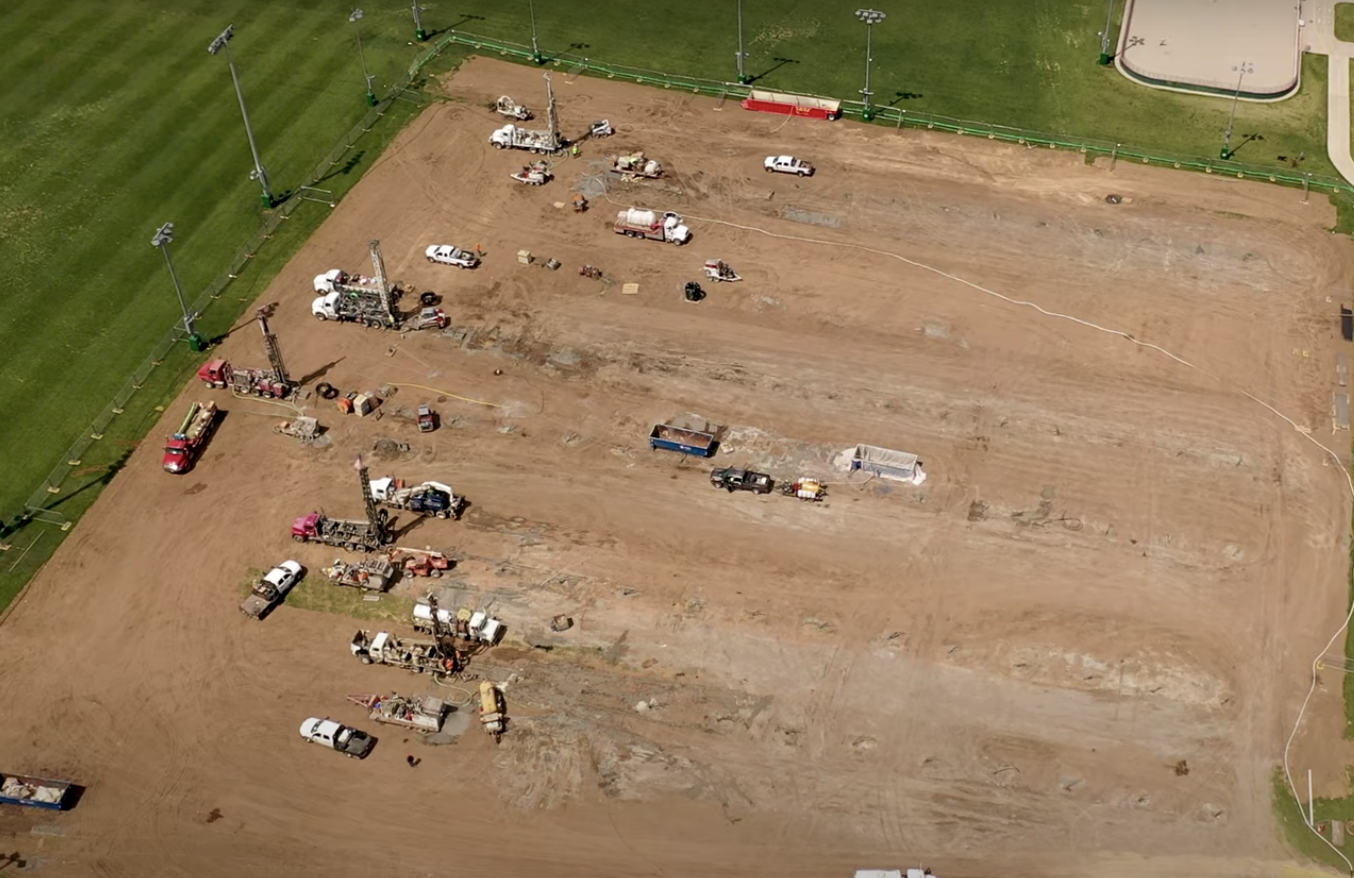
You may wonder what has happened to several of the intramural fields that have gone from green grass to brown dirt over the summer. Say hello to GeoX, the largest ground-source heating and cooling system in Colorado, and one of the largest in the western United States. The project will employ geothermal energy – also called a ground source heat pump – for heating and cooling, to reduce energy consumption and costs.
GeoX has been in the planning stages at CSU for nearly a decade and will replace the current outdated steam heating system in the 50-year-old Moby Arena, Fum McGraw Center, Anderson Academic Center, Health and Exercise Science building, and the intramural gym. Geothermal energy systems take advantage of the constant temperature by circulating water through a field of pipes set deep into the ground. Once the ground cools or heats the circulating water, it takes little extra electrical energy to bring it to the desired temperature for a comfortable building. The conditioned water can be used in heating and cooling systems in the building’s HVAC climate control systems.
Take heart; the grass will be replaced, and the fields will be ready for action soon.
Nutrien Agricultural Sciences Building (formerly Shepardson Hall)
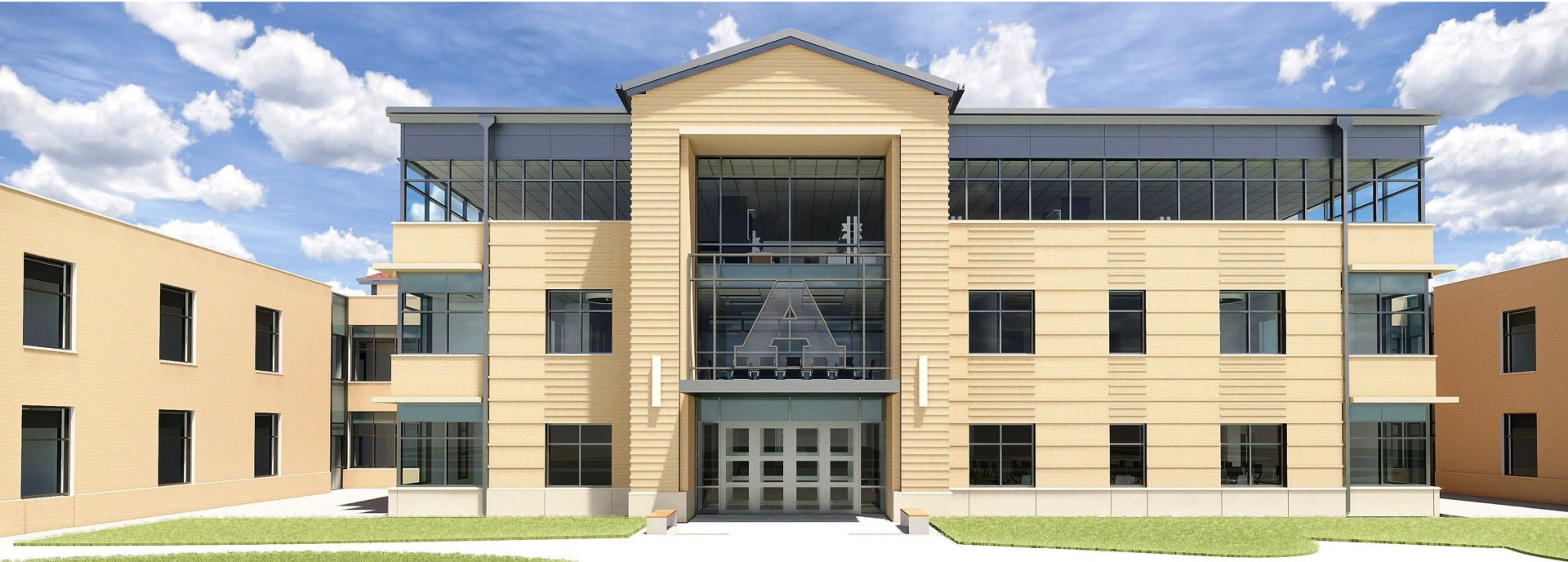
Construction on the new home for the College of Agricultural Sciences is progressing well on University Avenue. Libbie Coy Way is closed to vehicle and bicycle traffic south of University to A Street until summer 2021. Pedestrians are allowed on the east side of Libbie Coy Way.